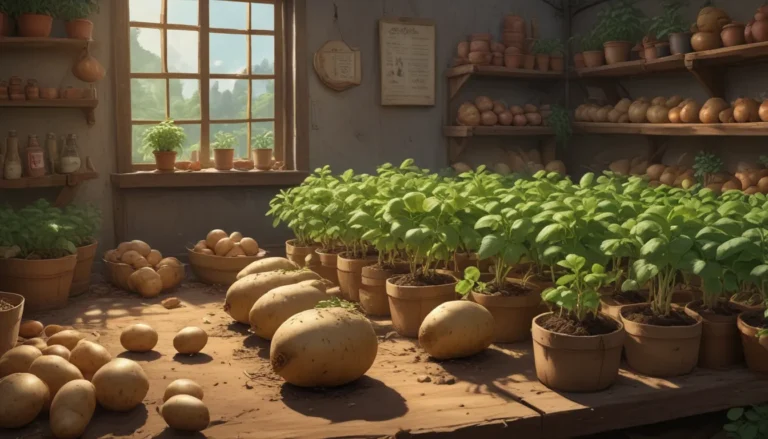Comprehensive Guide to Growing and Caring for Birchleaf Spirea Shrubs

Birchleaf spirea, also known as Spiraea betulifolia, is a perennial that can withstand harsh winter temperatures, making it an excellent addition to gardens in USDA Hardiness Zones that experience freezing temperatures. This versatile plant blooms in clusters all spring, showcases attractive green or yellow leaves in summer, and transitions to a vibrant display of foliage colors in the autumn. Not only is it visually appealing, but it also attracts bees and hummingbirds with its nectar-rich blooms.
In this detailed guide, we will explore everything you need to know about birchleaf spirea, including propagation, growth requirements, maintenance tips, pruning techniques, cultivar selections, pest and disease management, best uses, and a quick reference growing guide to help you successfully cultivate this beautiful shrub in your garden.
What You’ll Learn
Let’s dig deeper into these exciting aspects of growing and caring for birchleaf spirea:
- What Is Birchleaf Spirea?
- Propagation
- How to Grow
- Growing Tips
- Pruning and Maintenance
- Cultivars to Select
- Managing Pests and Disease
- Best Uses
- Quick Reference Growing Guide
What Is Birchleaf Spirea?
Birchleaf spirea is a dwarf shrub within the Spiraea genus, offering three-season interest in USDA Hardiness Zones 3 to 9. With its mounding habit, it grows to a height of two to four feet and spreads in a similar manner. Unique to this species are its round or egg-shaped leaves resembling birch foliage, available in varying shades of green, lime green, or yellow during spring and summer, and transforming into a kaleidoscope of colors in the fall.
Originating from Japan and other parts of East Asia, birchleaf spirea has two native varieties in North America, providing essential wildlife habitat and erosion control benefits. This drought-tolerant shrub is easily propagated from cuttings, making it a practical and economical choice for gardeners.
Birchleaf Spirea Propagation
Propagating birchleaf spirea can be done through softwood or hardwood cuttings, or by layering a stem to encourage root growth. Transplanting shrubs into containers or the ground requires adequate preparation of the planting hole and soil, ensuring proper drainage and nutrient availability for optimal growth. Detailed instructions on propagation methods and transplanting techniques can be found in our comprehensive guide.
How to Grow Birchleaf Spirea
Birchleaf spirea is a low-maintenance plant that thrives in well-drained soil with full sun exposure, although it can tolerate some shade. Proper watering, fertilization, and occasional pruning are key to maintaining healthy growth and abundant blooms. Fertilize with an all-purpose slow-release shrub food in early spring and water deeply only when the soil is dry to prevent root rot.
Growing Tips
Here are some essential tips to maximize the growth and health of your birchleaf spirea:
- Grow in full sun if possible to promote blooming
- Plant in well-draining soil
- Fertilize with all-purpose slow-release fertilizer once a year in early spring
- Water thoroughly when the soil is dry to avoid root rot risks
Pruning and Maintenance
Regular deadheading of flowers and pruning in late winter or early spring are recommended to maintain the appearance and health of birchleaf spirea. Pruning involves cutting back budding branches to promote new growth and fullness. Container-grown shrubs need additional care during winter months to prevent freezing and thawing damage.
Cultivars to Select
Several cultivars of birchleaf spirea offer unique foliage colors and characteristics to enhance your landscape:
- Gold Tor
- Pink Sparkler
- Superstar
Each cultivar showcases distinct flower colors, foliage patterns, and growth habits, providing options for various gardening preferences and design themes.
Managing Pests and Disease
Birchleaf spirea is relatively resistant to pests and diseases, making it a hassle-free addition to your garden. However, occasional inspection for pests and diseases is recommended to ensure plant health and longevity. Common issues such as aphids, scale, spider mites, fire blight, leaf spot, powdery mildew, and root rot can be prevented or controlled with proper care practices and timely intervention.
Best Uses of Birchleaf Spirea
The versatility of birchleaf spirea makes it suitable for various landscape applications, including beds, borders, containers, pollinator gardens, and erosion control measures. However, its dormant appearance in winter should be considered when choosing its placement in prominent areas, as some cultivars may not provide visual interest during colder months.
Quick Reference Growing Guide
- Plant Type: Deciduous perennial flowering shrub
- Flower / Foliage Color: White, pink / green, yellow (multicolored in fall)
- Hardiness (USDA Zone): 3-9
- Bloom Time/Season: Spring (colorful foliage in fall)
- Exposure: Full sun to part sun
- Height: 2-4 feet
- Spread: 2-4 feet
- Water Needs: Moderate
- Pests & Diseases: Aphids, scale, spider mites; fire blight, leaf spot, powdery mildew, root rot
A Burgeoning Affection for Birchleaf Spirea
In conclusion, birchleaf spirea is a delightful addition to any garden, offering an array of visual interest throughout the seasons with minimal maintenance requirements. Its hardiness, resilience, and aesthetic appeal make it a popular choice among gardeners seeking both beauty and practicality in their landscapes.
If you already grow birchleaf spirea or have questions about its care and growth not covered in this guide, feel free to share your experiences or seek advice in the comments section below. For further exploration of spirea varieties and care tips, check out our related guides on growing spirea shrubs.
By providing comprehensive insights into growing and caring for birchleaf spirea shrubs, this guide equips readers with valuable information to successfully cultivate this beautiful plant in their gardens. With practical tips, cultivar selections, and pest management advice, gardeners can confidently grow birchleaf spirea with ease and enjoyment.





